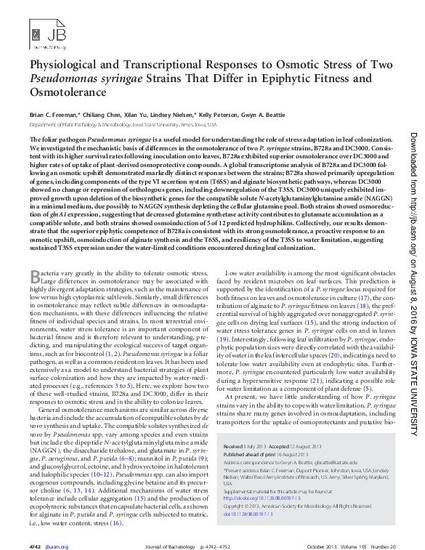
The foliar pathogen Pseudomonas syringae is a useful model for understanding the role of stress adaptation in leaf colonization. We investigated the mechanistic basis of differences in the osmotolerance of two P. syringae strains, B728a and DC3000. Consistent with its higher survival rates following inoculation onto leaves, B728a exhibited superior osmotolerance over DC3000 and higher rates of uptake of plant-derived osmoprotective compounds. A global transcriptome analysis of B728a and DC3000 following an osmotic upshift demonstrated markedly distinct responses between the strains; B728a showed primarily upregulation of genes, including components of the type VI secretion system (T6SS) and alginate biosynthetic pathways, whereas DC3000 showed no change or repression of orthologous genes, including downregulation of the T3SS. DC3000 uniquely exhibited improved growth upon deletion of the biosynthetic genes for the compatible solute N-acetylglutaminylglutamine amide (NAGGN) in a minimal medium, due possibly to NAGGN synthesis depleting the cellular glutamine pool. Both strains showed osmoreduction of glnA1 expression, suggesting that decreased glutamine synthetase activity contributes to glutamate accumulation as a compatible solute, and both strains showed osmoinduction of 5 of 12 predicted hydrophilins. Collectively, our results demonstrate that the superior epiphytic competence of B728a is consistent with its strong osmotolerance, a proactive response to an osmotic upshift, osmoinduction of alginate synthesis and the T6SS, and resiliency of the T3SS to water limitation, suggesting sustained T3SS expression under the water-limited conditions encountered during leaf colonization.
Available at: http://works.bepress.com/gwyn-beattie/10/

This article is from Journal of Bacteriology 195 (2013): 4742, doi: 10.1128/JB.00787-13. Posted with permission.